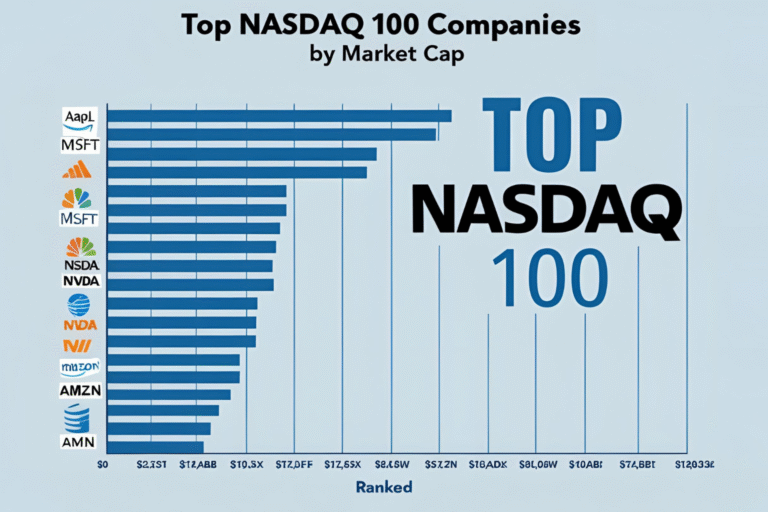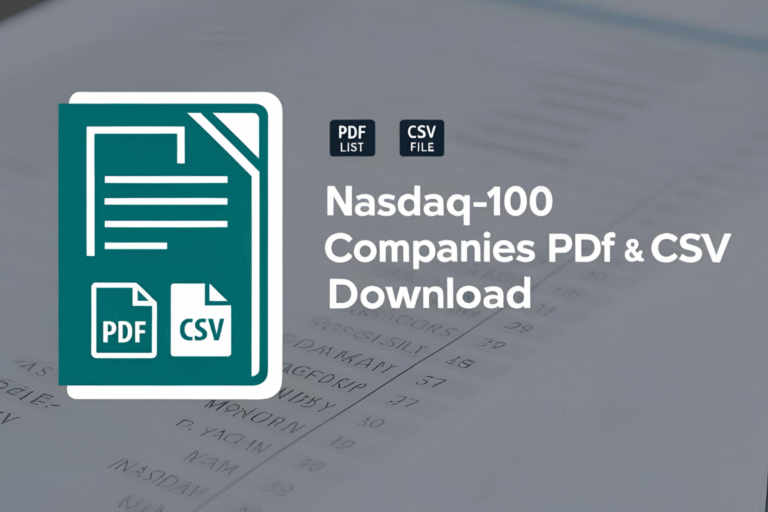How Often Does the Nasdaq 100 Rebalance?
The Nasdaq 100 index is reviewed and rebalanced regularly to ensure it continues to reflect the largest and most relevant non-financial companies listed on the Nasdaq Stock Exchange. But how often does the Nasdaq 100 rebalance, and why does it matter?
Understanding the rebalancing schedule can help investors anticipate changes in index composition, stock weightings, and ETF holdings like QQQ.
What Is Index Rebalancing?
Rebalancing is the process of adjusting the components and weightings of an index based on updated data, such as market capitalization and trading activity. It ensures that the index remains aligned with its core criteria and objectives.
In the case of the Nasdaq 100, the goal is to represent the 100 largest non-financial Nasdaq-listed companies.
How Often Does the Nasdaq 100 Rebalance?
The Nasdaq 100 rebalances once a year, typically in December.
However, there are two types of adjustments:
- Annual Reconstitution
- Occurs every December
- Companies may be added or removed based on market cap rankings
- Full review of all index components
- Quarterly Rebalancing
- Happens in March, June, and September
- Adjusts individual stock weightings due to market cap changes
- No changes to company inclusion unless necessary
Why Rebalancing Matters
Rebalancing ensures that:
- The index reflects current market realities
- Top-performing stocks gain proper weight
- Underperforming or ineligible companies are removed
- Index-tracking ETFs like QQQ stay updated and accurate
How It Impacts Investors
Changes in index composition can affect:
- ETF portfolios that mirror the Nasdaq 100
- Stock prices of companies added (may rise) or removed (may fall)
- Sector weightings within the index
- Overall performance and volatility of the Nasdaq 100
Examples of Past Rebalancing Changes
- A company may be added if it rises in market cap and meets eligibility
- A company may be dropped due to a merger, acquisition, or falling below the required size
- In 2022, Zoom and Airbnb were added; Peloton was removed
These changes are publicly announced in advance, usually early December.
Final Thoughts
So, how often does the Nasdaq 100 rebalance? The index undergoes a major annual reconstitution every December and quarterly rebalancing to maintain its accuracy. Staying informed about these changes can help investors adjust their portfolios accordingly and stay aligned with the market’s top performers.
FAQs
When is the Nasdaq 100 rebalanced each year?
The main rebalancing occurs annually in December, with quarterly adjustments in March, June, and September.
What triggers a stock’s removal from the Nasdaq 100?
A company may be removed due to reduced market cap, poor performance, mergers, or failure to meet eligibility criteria.
How does rebalancing affect stock prices?
Companies added to the index may see a price boost due to new demand. Those removed might face short-term selling pressure.
Where can I find the updated list after rebalancing?
The updated Nasdaq 100 list is published on Nasdaq’s official site and ETF provider websites.
Do ETFs like QQQ rebalance too?
Yes, ETFs that track the Nasdaq 100 update their holdings to match the revised index composition.




